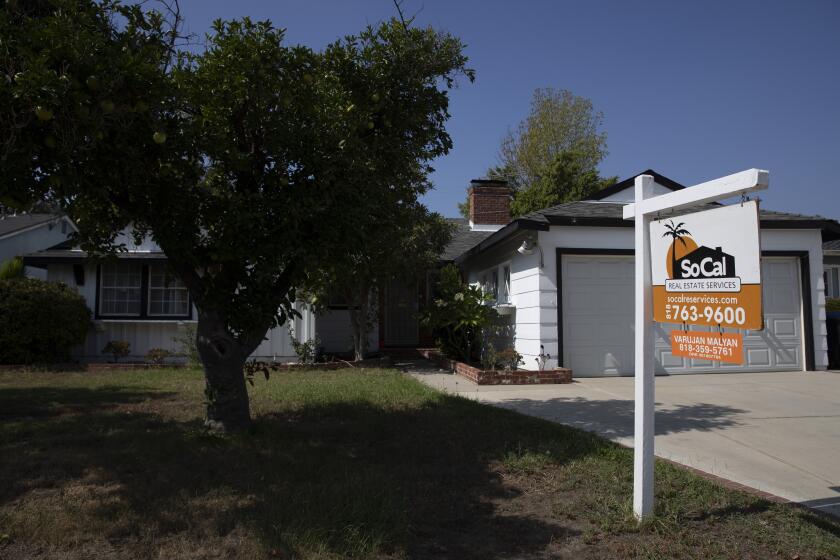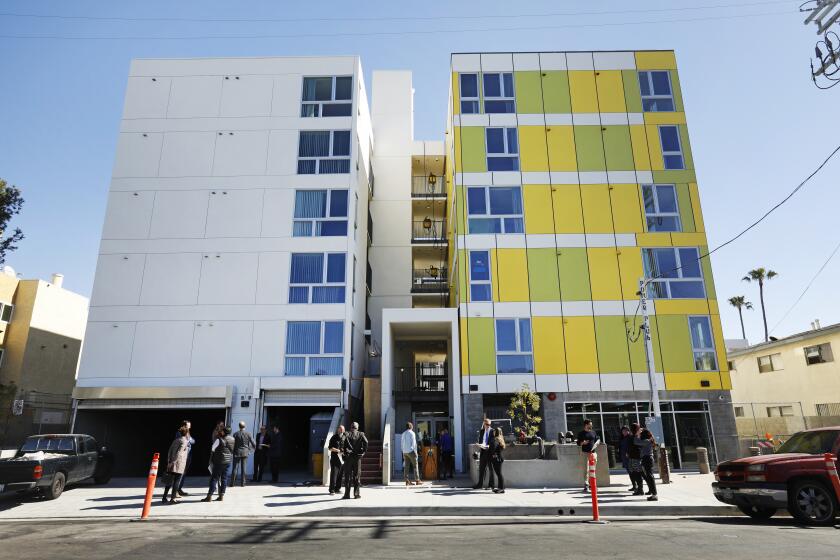Protests, lawsuits and a dead rat: A wealthy California city’s epic fight to block growth
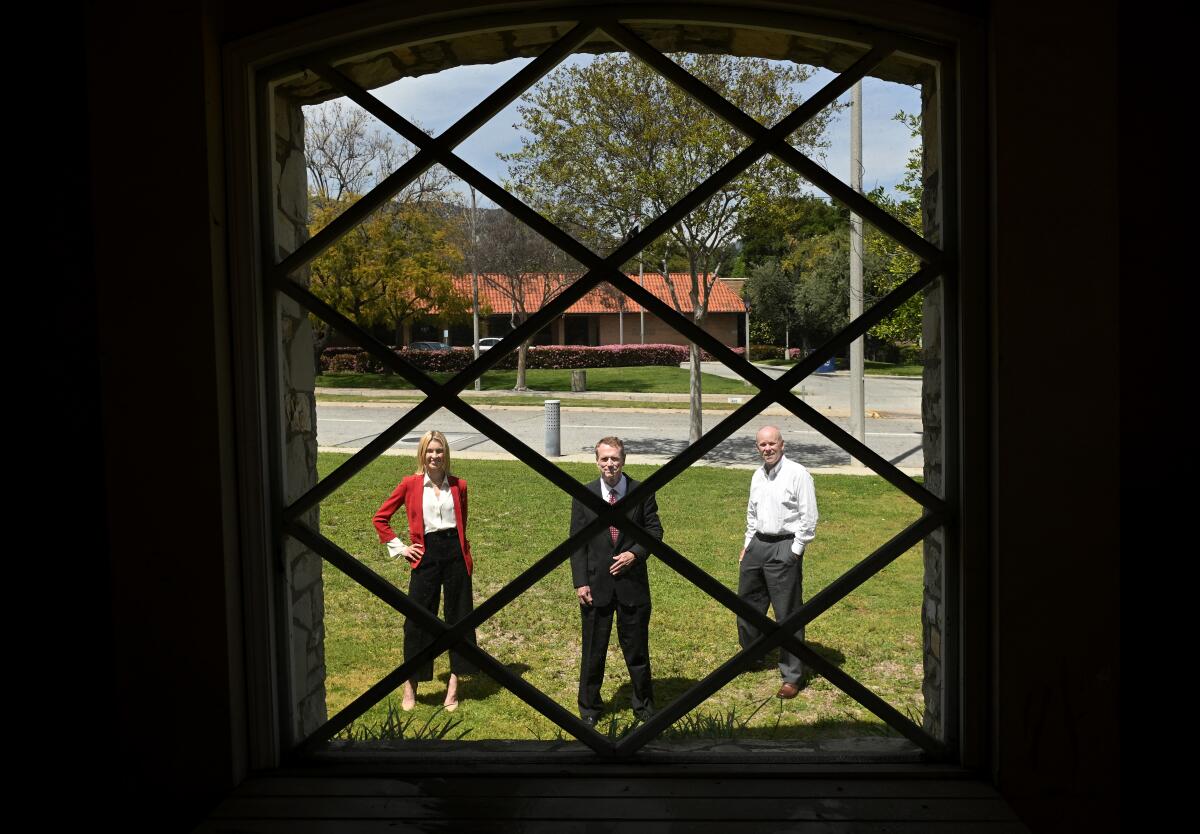
The last group that tried to build multifamily housing in La Cañada Flintridge received a dead rat in the mail.
The package’s message couldn’t have been clearer, echoing the words that a former city planning commissioner said at a public hearing in 2013: “We like the way it is now.”
Tucked in a verdant crook of the Verdugo and San Gabriel mountains, the city is a peaceful refuge from the bustle of Los Angeles, an affluent bastion of beautiful single-family homes on large, leafy lots.
It’s expensive, with an average home value of $1.99 million. And it’s little; while the rest of Southern California swelled with residents over the last four decades, La Cañada Flintridge’s population has hovered around 20,000 since 1980.
For decades the city developed a reputation as being fiercely anti-development in a conflict that came down on clear ideological lines: quality of life versus free market capitalism. To the slow-growthers, the foes were developers trying to get rich at the town’s expense.
But the current fight — over the future of a 1.29-acre lot holding an aging Christian Science church building at 600 Foothill Blvd. — has pitted them against a harder group to demonize, those trying to get people into desperately needed affordable housing.
And their foes are playing a card that past builders never used. Because the state says the city has not complied with its housing rules, the developers might get to bypass La Cañada Flintridge city planners altogether and build an even bigger project than the one they originally proposed.
NIMBYism takes root
The city’s battle over development dates to the 1980s when the founder of now-shuttered sporting goods retailer Sport Chalet looked to build the company’s corporate headquarters on Foothill Boulevard.
The proposal went through 34 public hearings and won approval from the City Council, but an opposition group called Friends of 91011 sprouted up soon after, ousting the council members who favored the project and suing the city to overturn the certification of the environmental impact report.
Jim Edwards, the city’s former mayor who lost reelection after supporting the project, called the outrage pure NIMBYism.
Fast forward four decades and the sentiment still rages on.
The current fight began in 2015 when Oakmont Senior Living — a Santa Rosa, Calif., housing company with 51 communities across California and Nevada — eyed the address for its next development, proposing a three-story, 72-unit facility.

Subscribers get exclusive access to this story
We’re offering L.A. Times subscribers special access to our best journalism. Thank you for your support.
Explore more Subscriber Exclusive content.
Oakmont presented the project to the city’s planning commission in January 2018, and commissioners requested time to gauge residents’ concerns about potential effects on views, traffic and parking, according to the La Cañada Valley Sun.
The opposition was swift and unrelenting, led by an actor who played a famous sitcom dad. “Family Ties” star Michael Gross founded Together La Cañada, a nonprofit dedicated to “responsible development that fosters sustainable growth and public safety.”
He called the project the “symptom of a larger problem” of not adhering to the Downtown Village Specific Plan, a framework adopted by the city in 2000 to enhance the area’s role as a destination.
The group, which didn’t respond to multiple interview requests, carried out the same purpose as Friends of 91011, rallying residents against the development and stalling progress to the point at which Oakmont made no further proposals. After an Oakmont executive received the dead rat in the mail, postmarked from a local ZIP Code, the company abandoned the project in 2019.
Then came Cedar Street Partners, a development company that also specializes in senior housing projects. But unlike Oakmont, Cedar Street has three partners with strong ties to the city: Alexandra Hack, who grew up in the area; Garret Weyand, who lives a few blocks away from the site; and Jonathan Curtis, who was once the city’s mayor.
The company picked up the property for $4.2 million in September 2019 and began laying plans for a mixed-use project: 47 senior housing units, a 12-room hotel and office space. The ambitious project would require an exemption from the downtown area’s strict zoning code, but the team believed it should be granted because of its much-needed contribution of multi-unit housing.
The number of homes for sale in Southern California has fallen to start the year, a reversal of normal trends as high mortgage rates keep sellers on the sidelines.
The backlash began immediately, and Together La Cañada alleged on its website that the project would set “a disturbing precedent which would undoubtedly over time alter a large portion of the Foothill corridor.”
The group also launched two petitions deriding the project. One features an illustration of a traffic jam at the proposed site. The other, titled “Why Is the 600 Foothill Project Back???,” collected more than 200 signatures.
On the website, petitioners raised concerns over the project’s potential effects on traffic and density. Most argued that the location simply wasn’t suitable for multifamily housing.
“This intersection with the Arco station directly adjacent is already so busy and dangerous — putting 47 dwellings with 70-100 parking spaces there is irresponsible,” wrote Robin Gruber.
“I’m all for 55+ living accommodations, but disagree this is the best location and scope of project,” wrote Kelly Chamberlain.
Other comments were more impassioned.
“This will change the tapestry of La Cañada forever! Stop the insanity!” wrote Patty Wynne-Hughes.
The developers focused on public outreach with three hearings totaling 13 hours and private conversations with City Council members. Weyand said he spoke with business owners surrounding the project, all of whom supported the development privately, but wouldn’t support it publicly for fear of being boycotted by residents.
In September, the city’s planning commission recommended approval of the project.
The trio felt optimistic, but the vibe was short-lived. Two months later, the City Council unanimously voted down the project 4 to 0.
“We went in hopeful, but looking back, there’s absolutely no way they would’ve ever approved it,” Hack said.
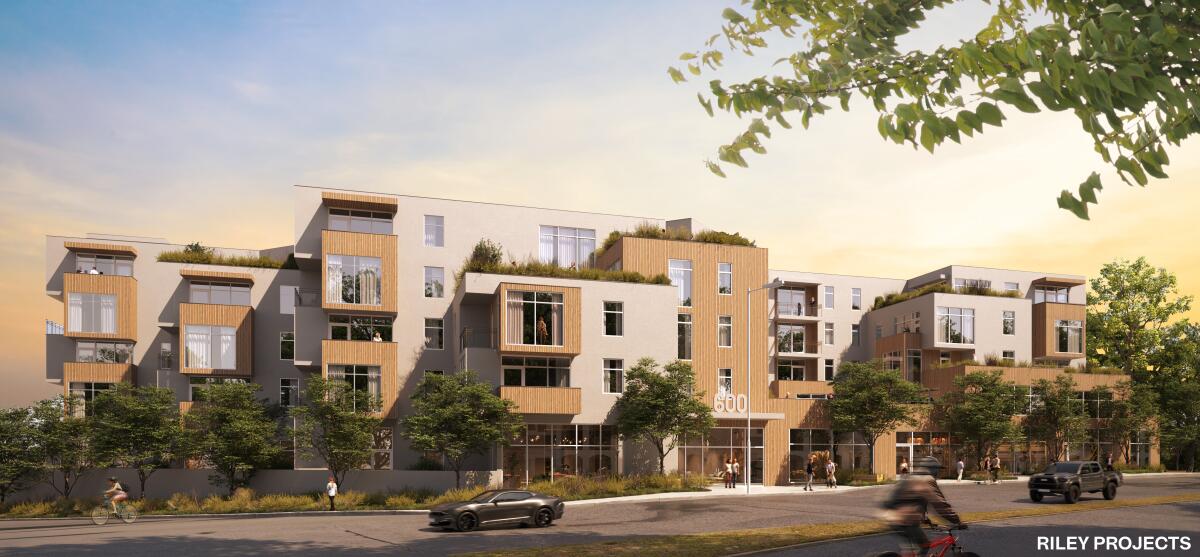
She added that the council’s stated reason for denying the project was that it would disturb the village-like atmosphere of the downtown corridor.
“What village?” she said. “We’re next to an Arco and a giant Ralphs parking lot.”
A drive down Foothill Boulevard, the city’s main commercial stretch, showcases a bit of local charm. There is a Pilates studio, smoothie shop, bookstore, bar, trading card store and a well-reviewed fried chicken joint. But cars far outnumber the people on foot.
An independent economic analysis of the Downtown Village Specific Plan in 2020 found that its mandates “have not resulted in the type of development pattern envisioned in the plan.”
The Cedar Street trio walked away from the City Council vote dejected. But they could play hard too. The company is mounting a strategy for an even bigger development based on a little-known, untested legal provision in the state housing law. If it works, it’ll have ramifications far beyond the small foothill city.
Out of compliance
In the quest to address California’s housing crisis, the state relies on every single city and county to identify sites to build affordable housing. Some have succeeded. Many, many others, including La Cañada Flintridge, have failed.
The initiative dates to 1967 when Gov. Ronald Reagan signed a housing law that required local governments to plan “for the housing needs of all economic segments of the community.”
As part of the housing element law, the Department of Housing and Community Development requires cities and counties to develop plans for growth every eight years to address population increases and account for factors such as density and overcrowding to keep up with the state’s housing need projections.
Those projections are a doozy. In 2019, Gov. Gavin Newsom said Southern California must plan for 1.3 million homes by 2029 — triple the number required by the previous cycle.
The latest plans were due in October 2021 for Southern California jurisdictions, and the state required that La Cañada Flintridge identify properties for an additional 612 units over the next eight years. The majority of that would probably have to come from multifamily housing, which is virtually nonexistent in the city.
A 2018 profile of the city by the Southern California Assn. of Governments found that the housing stock is 94.5% single-family and 4.9% multifamily. The same study found that the city permitted just three multifamily units since 2000.
The housing element law requires local governments to pinpoint certain areas that could be redeveloped into housing, but according to state housing officials, La Cañada Flintridge chose unrealistic sites: occupied single-family homes, thriving businesses, etc.
Two months after the city submitted its draft in October, the Department of Housing and Community Development rejected it because it didn’t provide a definitive timeline for the impacts of its plan, among other reasons.
The rejection was one of many handed down from Sacramento. Though the drafts were due a year and a half ago, roughly half of the 89 jurisdictions in L.A. County are still out of compliance.
Coronado officials have thumbed their noses at Gov. Gavin Newsom and state regulators, calling the process “central planning at its worst” and assuring residents that it will be years before the state cracks down.
Some cities have been accused of submitting drafts and redrafts in bad faith, and a handful, including La Cañada Flintridge, are being sued for lack of compliance.
In March, the nonprofit organization Californians for Homeownership filed a lawsuit against the city, alleging it “adopted a housing element that does not identify adequate sites for housing development, among other deficiencies.”
Matt Gelfand, who’s leading the litigation, said the city failed to identify places that could reasonably be redeveloped into housing.
“The city has frequently said that it’s built out with no space for additional housing,” he said. “But how can you argue there’s no room for housing when someone wants to build some and you’re telling them no?”
California’s housing element law has been criticized as toothless because it doesn’t ensure the actual construction of housing, but Gelfand said there are a handful of punishments that can result from being out of compliance.
Those punishments can include ineligibility for certain state grants and suspension of a city’s building permit authority.
One punishment is uncertain and untested. It’s called builder’s remedy, and Cedar Street Partners is trying to use it to push its project through without the city’s consent.
Builder’s remedy
Builder’s remedy is a provision in California’s Housing Accountability Act that prohibits cities from denying certain housing projects if the city is out of compliance with housing element law. In other words, it allows housing developers to bypass local zoning restrictions as long as 20% of the units are low-income or 100% are moderate-income.
“Builder’s remedy is an odd duck,” said Niran Somasundaram, an associate attorney with the law firm Hanson Bridgett. “It’s been a part of California law since 1990, but there’s a lot of gray area, and it hasn’t been widely used.”
Until now, developers have shied away from the strategy because it goes over the heads of local governments that most builders need to work with on a yearly basis. Don’t bite the hand that feeds you — or zones you.
But this time around, state housing officials have signaled they’d be willing to back builder’s remedy projects in court.
“It’s all part of this trend from the California Legislature to make clear that building more housing throughout the state at all income levels is a priority,” Somasundaram said. “This is the first time developers are looking at it as a viable pathway because there’s buy-in from [the Department of Housing and Community Development] and state officials.”
Stripping cities of such power and handing it to developers is unprecedented, and it’s already leading to a bevy of applications, especially in affluent areas with low housing production and high potential profits.
The most prominent example is Santa Monica, where at least 16 builder’s remedy projects are in the pipeline. One developer is calling for 4,500 apartments across 14 buildings — more new housing than the city has built in the last decade.
To end homelessness, California must build more housing, especially affordable housing. SB 35 has helped speed up affordable developments. It should be continued and expanded.
“Everyone was waiting on the sidelines to see who’d be the guinea pig,” Hack said. “Once we saw the Santa Monica projects, we decided we were ready.”
La Cañada Flintridge submitted the second draft of its housing element in October. The state rejected it two months later, and the city filed the third draft in February and claimed on its website that it was in compliance. But the state has yet to approve it.
In an interview with the Real Deal, Keith Eich, the city’s mayor, called the draft a good-faith effort.
But until it is approved, developers are free to submit builder’s remedy applications.
Hack, Weyand and Curtis submitted their application in November. They said they bent over backward meeting the city’s conditions for their first application — adding a streetlight, moving the main entrance, etc. — but this time around, the concessions are over.
And because they no longer need to adhere to the city’s strict zoning, they’re going bigger. What started as a three-story project with 47 senior housing units and a 12-room hotel across 77,000 square feet has turned into a five-story project with 80 mixed-income units and a 14-room hotel across nearly 120,000 square feet.
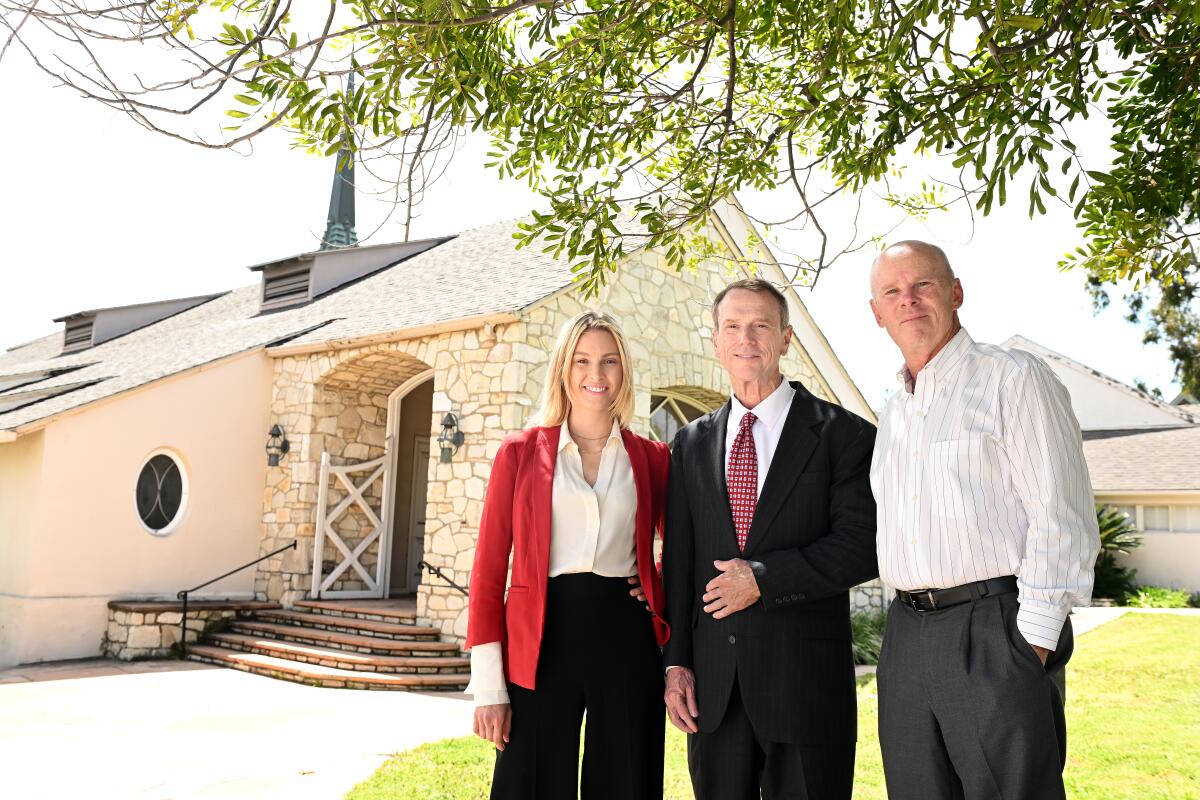
Then began the back and forth, with both sides attempting to navigate the gray area to their benefit.
In February, the city determined that the application was incomplete, claiming that because the city has adopted its housing element — despite it not yet being approved by the Department of Housing and Community Development — it was not subject to builder’s remedy, and the project would have to adhere to the standard zoning laws.
The Department of Housing and Community Development got in the mix, sending a letter to the city in March reminding it that it was still out of compliance.
On April 7, the city set an appeal for May 1 to determine the status of the application. Now, the developers wait.
On a cloudy day in April, the three developers meet at the church, which has been abandoned.
A homeless person has taken shelter in a corner of the property. The inside reeks of mold, and the roof of a room is caving in.
“This state has a housing crisis, and we’re trying to help La Cañada do their part,” Weyand said. “If not here, then where?”
More to Read
Sign up for Essential California
The most important California stories and recommendations in your inbox every morning.
You may occasionally receive promotional content from the Los Angeles Times.
